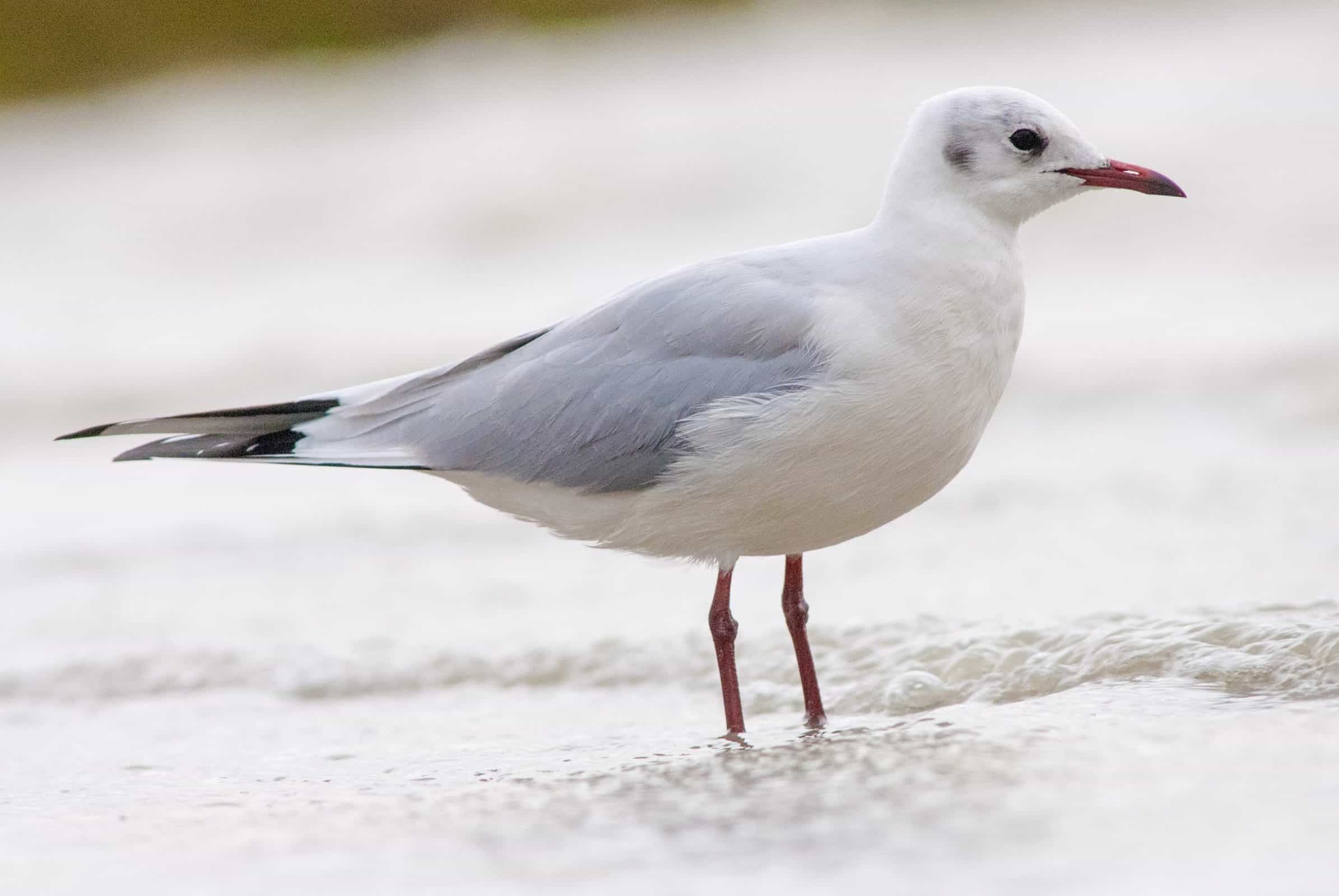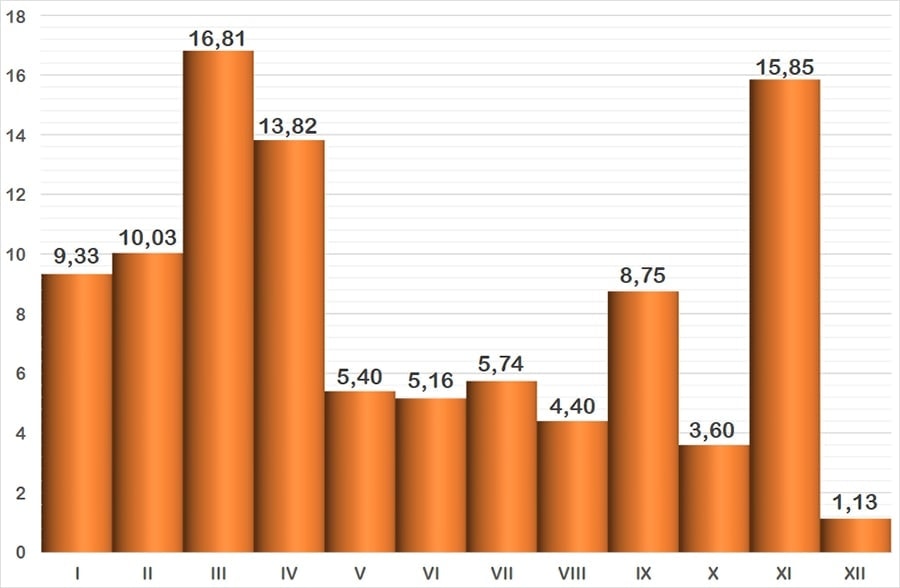This medium-sized gull is easily identifiable, in summer, by the chocolate-coloured hood that does not cover its nape. Its legs and bill are red, in the case of the bill it may appear black. It is white and has a grey back and at rest the wing feathers give it a black touch. The juveniles’ backs are a chocolate brown colour and especially on the wings too that contrasts with the grey that begins to cover its back from the start of winter, the head pattern is reminiscent of the transition plumage of adults, but with light, chocolate colours. In winter, the hood disappears and becomes a patch behind and above the eye. The pattern, with the white leading edge extending over the wing tip, aids identification.

Species 1
Black-headed Gulls
Scientific name
Family 2
Taxonomic Affinity Group 3
Phenology 4
It is a resident bird, which nests abundantly in wetlands. It is least likely to be seen in December contrary to November, however, when there is a large increase, probably due to individuals arriving for winter, the second most abundant season. There is a large prenuptial migratory passage, with a population decline in summer which is due to intense nesting, a time when, if their colonies and breeding areas remain undisturbed, they are less active.

The graph represents the probability of seeing a species during the year, grouped into months. The vertical axis indicates the percentage value. Each of the bars expresses its value. The horizontal axis represents the months: I = January, II = February, III = March, IV = April, V = May, VI = June, VII = July, VIII = August, IX = September, X = October, XI = November and XII = December.
Observation recommendations
It is certainly one of the most plentiful gulls whose feeding activity in wetlands makes it easily observable. Discovering their plumage and identifying their ages is an interesting exercise and good practice for newcomers to the world of birdwatching.
Observation areas where we can find it
Notes
[1] The names used are from the list of birds of Spain, drawn up by SEO/BirdLife and updated to 2019 (https://seo.org/listaavesdeespana/). The reference is: Rouco, M., Copete, J. L., De Juana, E., Gil-Velasco, M., Lorenzo, J. A., Martín, M., Milá, B., Molina, B. & Santos, D. M. 2019. Checklist of the birds of Spain. 2019 edition. SEO/BirdLife. Madrid.
[2] The taxonomic family to which it belongs is indicated.
[3] Traditionally, waterbirds have been grouped according to their taxonomy or “taxonomic affinity”, i.e., when some birds coincide in certain features that allow them to be classified scientifically, but without leaving the rigour of science, they are put together in these groups so that they can be easily recognised. These groups are the following: Greves (belonging to the Podicipedae family), Herons and Similar (includes the families: Ardeidae -Herons- Ciconiidae -Storks- and Threskiornithidae -Ibises and spoonbills-), Ducks (the whole Anatidae family), Coots and Similar (the family Rallidae corresponding to Rails, Gallinules and Coots), Cranes (also with only one family, the Gruidae), Waders , a heterogeneous group, the most diverse of this classification, includes the families Burhinidae (Stone-curlews), Haematopodidae (Oystercather), Recurvirostridade (Avocets and Stilts), Glareolidae (Pranticole), Charadriidadea (Plovers), Scolapacidae and finally Gulls and Similar (the recently unified family Laridae, i.e. Gulls and Terns).
[4] Phenology studies the relationship between the cycles of living beings and meteorological factors, and in our latitude these factors manifest themselves as variations throughout the year, thus relating the seasons to the birds’ cycles (breeding, migratory journeys, etc.) The graph shows the probability of seeing a bird depending on the month. It uses data from 48 bird censuses carried out between October 2016 and September 2018. The method used is that of a census route with sampling stations, with a total count on the sheet of water.
